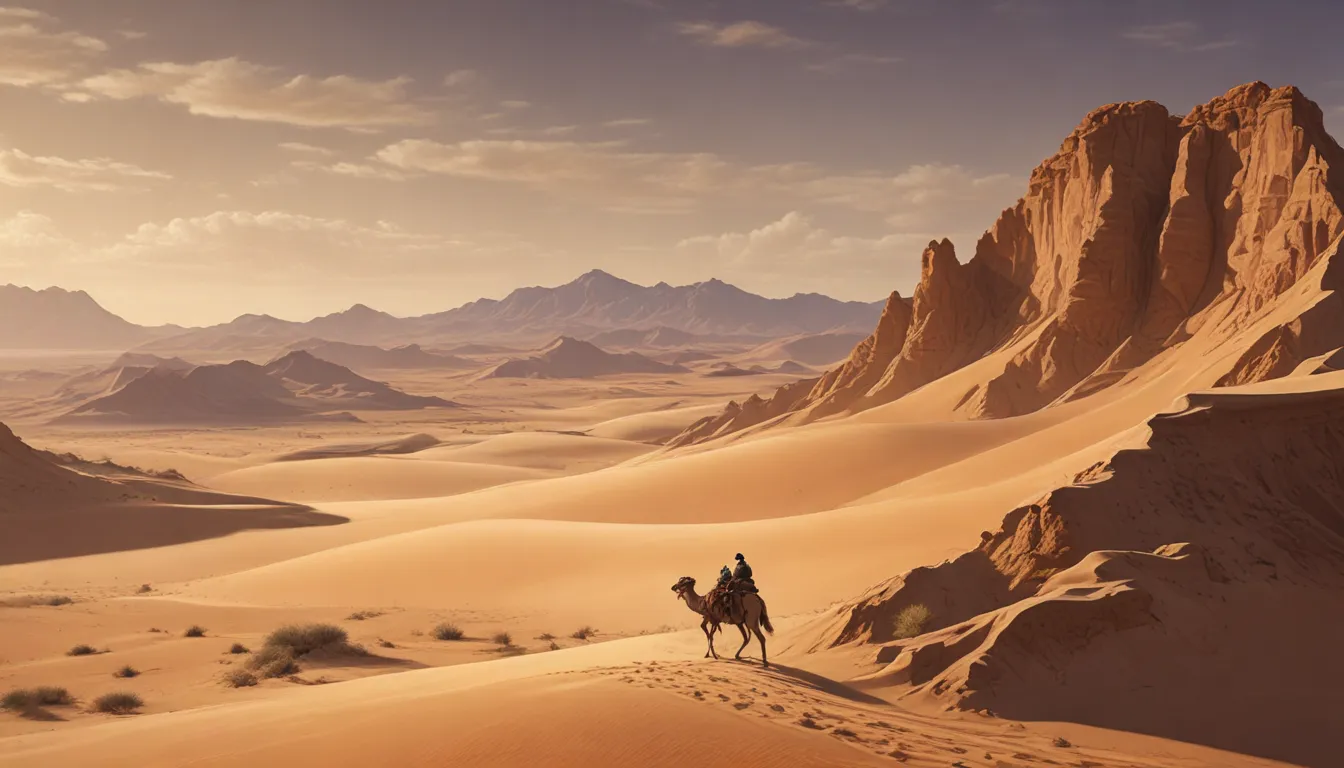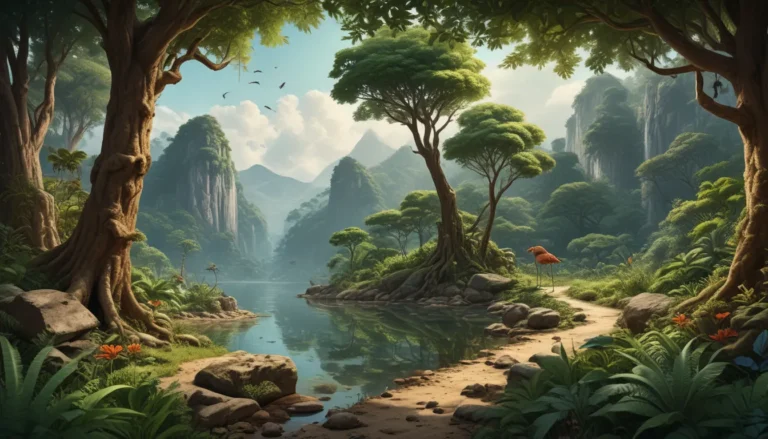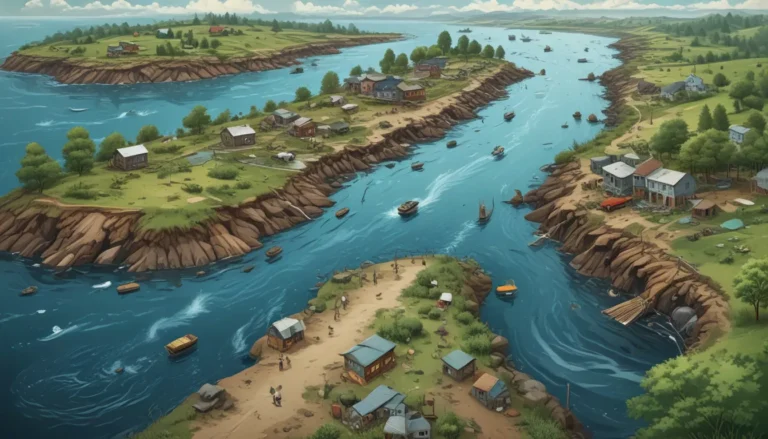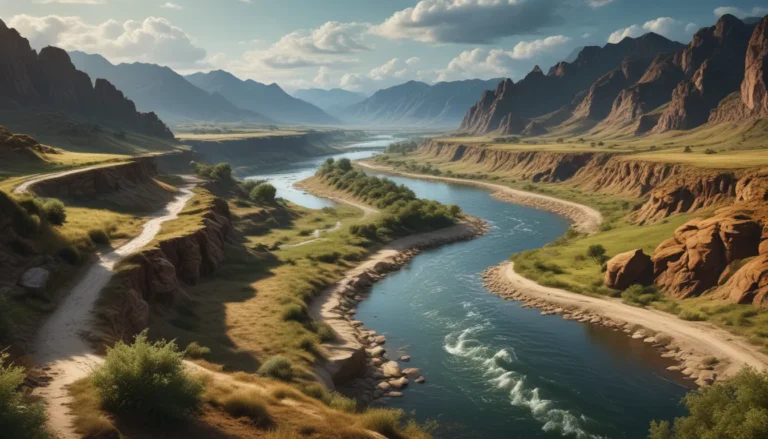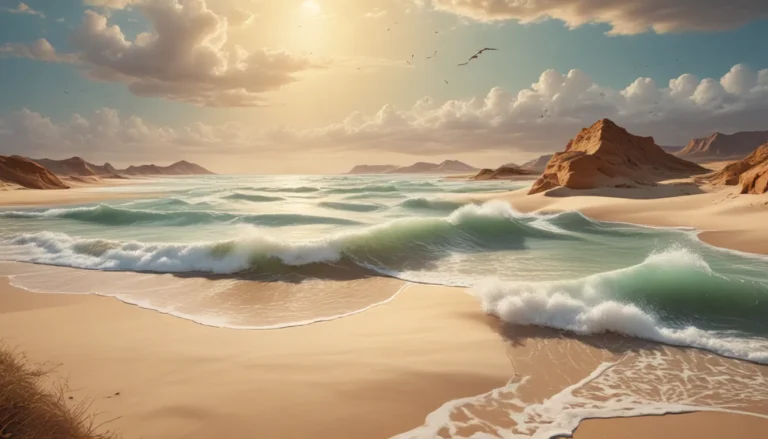A Note About Images: The images used in our articles are for illustration purposes only and may not exactly match the content. They are meant to engage readers, but the text should be relied upon for accurate information.
Welcome to the captivating realm of the Gobi Desert, a vast expanse of arid land stretching across northern China and southern Mongolia. This enigmatic desert entices adventurers and researchers alike with its unique landscapes and ecological wonders. In this article, we will delve into the 25 best facts about the Gobi Desert, shedding light on its remarkable characteristics, wildlife, climate, and historical significance. Whether you are a nature enthusiast, a geography buff, or simply curious about the world’s diverse terrains, these facts will unveil the mysteries and wonders of this iconic desert. So, buckle up and prepare to embark on a virtual journey through the enchanting realm of the Gobi Desert, where tales of resilience, adaptation, and natural marvels await.
Key Takeaways:
- The Gobi Desert is not just sand – it’s a diverse landscape of rocky terrain, fossil treasures, and rare wildlife, making it a fascinating destination for adventurers and nature enthusiasts.
- The Gobi Desert’s enduring beauty and cultural significance make it a living legacy, inspiring exploration and evoking a sense of wonder and awe, inviting all to uncover its timeless mysteries.
It’s the Largest Desert in Asia
Covering an area of approximately 500,000 square miles, the Gobi Desert stands as the largest desert in Asia, encompassing a diverse range of landscapes, from vast sand dunes to rocky mountains.
The Gobi Desert is Not Just Sand
Contrary to popular belief, the Gobi Desert is not entirely composed of sand. In fact, only 5% of the desert is covered in sand dunes, while the rest is a combination of rocky terrain, gravel plains, and sparse vegetation.
The Flaming Cliffs
The Gobi Desert is home to the famous Flaming Cliffs, also known as Bayanzag, a striking red sandstone formation renowned for its rich fossil findings, including dinosaur eggs and skeletal remains.
It’s a Cold Desert
Despite being associated with scorching temperatures, the Gobi Desert experiences extreme temperature differentials, with winter temperatures plummeting to as low as -40°C (-40°F) and soaring to over 50°C (122°F) in the summer.
The Elusive Gobi Bear
The Gobi Desert is the habitat of the rare and endangered Gobi bear, also known as the Mazaalai, a species uniquely adapted to the harsh desert environment.
The Gobi Desert is Expanding
Due to factors such as overgrazing and climate change, the Gobi Desert has been steadily expanding southward, encroaching upon once fertile grasslands and posing ecological challenges.
It’s a Treasure Trove of Fossils
The Gobi Desert is a paleontological paradise, renowned for its wealth of dinosaur fossils and significant discoveries that have contributed to our understanding of prehistoric life.
The Silk Road Connection
A section of the historic Silk Road traversed through the Gobi Desert, serving as a vital trade route that facilitated cultural exchange and commerce between the East and West.
The Gobi Desert is Rich in Minerals
Beneath its surface, the Gobi Desert harbors abundant mineral deposits, including gold, copper, and coal, attracting mining operations and fueling economic activity in the region.
The Gobi Desert is Inhabited by Nomadic Tribes
Various nomadic tribes, such as the Mongolians and Kazakhs, have traditionally roamed the Gobi Desert, practicing a semi-nomadic way of life centered around livestock herding and seasonal migrations.
The Mysterious Gobi Desert Death Worm
Legend has it that the Gobi Desert is home to the elusive and enigmatic creature known as the “Gobi Desert Death Worm,” a mythical cryptid that has sparked fascination and speculation.
It’s a Birdwatcher’s Paradise
The Gobi Desert boasts a diverse avian population, with over 200 bird species, including the majestic demoiselle crane and the elusive Pallas’s sandgrouse, making it a haven for birdwatching enthusiasts.
The Gobi Desert is a Starlit Haven
With minimal light pollution, the Gobi Desert offers unparalleled stargazing opportunities, providing a breathtaking canvas of celestial wonders against its expansive night sky.
The Gobi Desert is a Filmmaker’s Playground
Its otherworldly landscapes have served as a backdrop for numerous film productions, including scenes from blockbuster movies such as “Mongol: The Rise of Genghis Khan” and “The Kite Runner.”
The Gobi Desert is a Biodiversity Hotspot
Despite its harsh conditions, the Gobi Desert supports a surprising array of flora and fauna, including drought-resistant plants, elusive snow leopards, and the charming long-eared jerboa.
It’s Home to the Gobi Desert Gazelle
The Gobi Desert is the natural habitat of the endangered Gobi desert gazelle, a graceful antelope species that has adapted to thrive in the desert’s challenging environment.
The Gobi Desert is a Paleontologist’s Paradise
Paleontologists have unearthed a wealth of fossilized dinosaur eggs and skeletons in the Gobi Desert, providing invaluable insights into the ancient ecosystems and the creatures that once roamed the region.
It’s a Land of Contrasts
The Gobi Desert’s diverse terrain encompasses vast sand dunes, rugged mountains, and flat plains, creating a stunning tapestry of contrasting landscapes that captivate the imagination.
The Gobi Desert is a Cultural Tapestry
The Gobi Desert is steeped in rich cultural heritage, with ancient petroglyphs, Buddhist monasteries, and archaeological sites bearing witness to the desert’s historical and spiritual significance.
It’s a Hub of Paleontological Discoveries
The Gobi Desert has yielded remarkable paleontological discoveries, including the first confirmed dinosaur nests, providing crucial evidence of nesting behavior in prehistoric reptiles.
The Gobi Desert is a Testbed for Desertification Research
Given its susceptibility to desertification, the Gobi Desert serves as a vital research site for studying the impacts of climate change and human activities on arid ecosystems.
It’s a Land of Endurance
The Gobi Desert’s inhabitants, both human and animal, have demonstrated remarkable resilience in adapting to the desert’s unforgiving conditions, embodying the spirit of endurance and tenacity.
The Gobi Desert is a Geologic Marvel
Geologically, the Gobi Desert is a treasure trove, featuring unique rock formations, ancient sedimentary layers, and remnants of ancient seas that offer insights into the Earth’s dynamic history.
It’s a Source of Inspiration
The Gobi Desert’s stark beauty and enigmatic allure have inspired artists, writers, and explorers, fostering a sense of wonder and igniting the human spirit of curiosity and discovery.
The Gobi Desert is a Living Legacy
As a testament to the enduring forces of nature and the resilience of life, the Gobi Desert stands as a living legacy, inviting exploration and evoking a sense of awe and wonder.
The Gobi Desert, with its enigmatic allure and diverse tapestry of natural and cultural wonders, continues to captivate the imagination and inspire exploration. From its rich fossil deposits to its breathtaking landscapes, the Gobi Desert stands as a testament to the enduring forces of nature and the resilience of life in the face of adversity. As the largest desert in Asia, it holds a wealth of treasures waiting to be discovered, inviting adventurers, scientists, and enthusiasts to unravel its mysteries and embrace its timeless allure.
Conclusion
The Gobi Desert is a captivating and enigmatic expanse, boasting an array of fascinating features and ecological wonders. From its unique wildlife to its rich history and breathtaking landscapes, the Gobi Desert is a testament to the awe-inspiring diversity of our planet. As one of the world’s largest deserts, the Gobi continues to intrigue adventurers, scientists, and nature enthusiasts alike. Its extreme climate and remarkable adaptability of its inhabitants make it a truly remarkable destination for exploration and discovery.
Explore the captivating Gobi Desert
After exploring the captivating Gobi Desert, why not quench your thirst for adventure with more breathtaking destinations? Immerse yourself in the serene beauty of Crescent Lake, where crystal-clear waters and towering sand dunes create a stunning oasis. Journey to Jiayuguan, a city steeped in history and home to an iconic fortress that once guarded the western edge of the Great Wall. Finally, unearth the ancient wonders of Dunhuang, a cultural crossroads along the Silk Road, renowned for its Buddhist cave art and vibrant festivals.
FAQs
What is the Gobi Desert known for?
The Gobi Desert is renowned for its extreme climate, unique wildlife, and vast, mesmerizing landscapes. It is also famous for its rich history, including the discovery of dinosaur fossils and ancient Silk Road trade routes.
Is the Gobi Desert the largest desert in Asia?
Yes, the Gobi Desert is the largest desert in Asia, covering an area of approximately 500,000 square miles. Despite its name, which means “waterless place,” the Gobi features diverse ecosystems and is home to a variety of plant and animal species.
Our commitment to delivering trustworthy and engaging content is at the heart of what we do. Each fact on our site is contributed by real users like you, bringing a wealth of diverse insights and information. To ensure the highest standards of accuracy and reliability, our dedicated editors meticulously review each submission. This process guarantees that the facts we share are not only fascinating but also credible. Trust in our commitment to quality and authenticity as you explore and learn with us.
